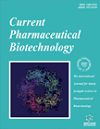
Full text loading...

The pharmaceutical industry is transforming with the advent of Industry 5.0, which is marked by integrating artificial intelligence (AI) into drug discovery and development. AI technologies, such as machine learning, deep learning, and natural language processing, revolutionize the traditional drug development pipeline by accelerating the identification of novel drug candidates, optimizing clinical trial designs, and personalizing therapies. Moreover, AI models enhance the prediction of drug efficacy, toxicity, and patient responses, minimizing the risk of failure of clinical trials. Nevertheless, despite these advancements, challenges remain in integrating AI into the pharmaceutical workflow, including data quality, regulatory concerns, and the need for interdisciplinary collaboration. This review explores the current state of AI applications in drug discovery, drug formulation and optimization, pharmacokinetics and pharmacodynamics, drug manufacturing and quality control, regulatory compliance and pharmacovigilance. Overall, AI is poised to redefine the landscape of drug discovery and development, fostering a new era of precision medicine and transforming patient outcomes globally, especially in the era of Industry 5.0.

Article metrics loading...

Full text loading...
References


Data & Media loading...